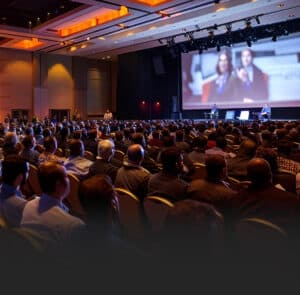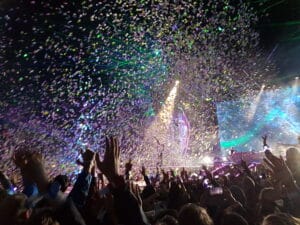Talent Vs Crew Facilities: Layouts That Keep Productions Moving
On a film set, time is money, and few things waste more time than inefficient facility layouts. The constant cross-traffic between talent and crew can drain 8–12% of your day. The solution lies in strategic planning: separating flows, creating quiet zones, and ensuring essential facilities like portable restroom trailers are placed to support, not hinder, the production schedule.
This guide details how to design your basecamp layout, including your restroom rentals, to maximize efficiency and keep everyone focused.
Key Takeaways
- Separate talent and crew routes with access-controlled doors; 1.2–1.5 m talent corridors and 1.8–2.4 m crew corridors cut conflicts by up to 60%.
- Place makeup, wardrobe, and holding 30–60 m from set; crew storage 15–30 m from load points to minimize travel and delays.
- Stagger calls, load-ins, meals, and wraps; use one-way foot traffic and 10-minute waves to maintain 85–90% station utilization.
- Build quiet corridors to NC-25–30 with solid-core gasketed doors and resilient floors; separate cart traffic to protect performance and audio.
- Equip glam with 20A GFCI circuits and tunable 95+ CRI lighting; standardize stations and color-code signage to speed turnovers and navigation.
Quiet corridors, buffer zones, and mobile stations keep moves under 3 minutes door-to-door. Soundproofing thresholds and smart power drops reduce resets and line loss. This principle also applies to supporting facilities like luxury portable restroom units; strategic placement is key.
Mapping Separate Flows for Talent and Crew
Although stages and back-of-house often overlap, mapping separate flows for talent and crew reduces congestion, protects privacy, and cuts turnaround time. This same logic of separation and dedicated access should be applied to all support services, including restroom trailer rentals. Use access-controlled doors for talent routes, and dedicate crew paths to loading, power, and rigging.
Quantify gains: separate flows typically cut hallway conflicts by 40–60%, reduce escort labor by 20–30%, and trim stage resets by 10–15%. Place makeup, wardrobe, and holding within a 30–60 m walk to set; keep crew storage, charging, and tool zones within 15–30 m of load points. Signage, color-coding, and badge tiers reinforce compliance and speed.
Strategic Restroom Trailer Placement for Productions
Just as you separate talent and crew flows, you must also strategically place your portable restroom trailers. A poorly located unit can become a major bottleneck.
- Talent Units: Place a luxury portable restroom close to the talent holding area, within the “quiet corridor.” This provides a private, comfortable retreat for cast without disrupting their focus or requiring a long walk.
- Crew Units: Position high-capacity restroom rentals near crew staging, craft services, and parking. Ensure the path is clear and accessible but away from the primary talent routes and camera sight lines.
- ADA Compliance: Always include an ADA-compliant unit in your portable bathroom rental plan, ensuring it is on a firm, level surface with a clear access path for all crew and talent members.
Learn more about our film production restroom solutions.
Designing Quiet Corridors and Buffer Zones
When you design quiet corridors and buffer zones, you protect performance focus and clean audio while keeping movement efficient. Placing a dedicated luxury portable restroom at the end of a quiet corridor ensures talent doesn’t have to break focus to find a facility.
Prioritize routes that bypass doors to stages and mics; every 3 dB noise cut halves perceived loudness. Target NC-25 to NC-30 in talent corridors. Use double-layer gypsum, staggered studs, acoustic sealant, and solid-core doors with perimeter gaskets. Add acoustic lobbies at junctures; a 6–8 ft airlock reduces corridor-to-room noise by 10–15 dB.
Glam Stations: Power, Lighting, and Storage Essentials
You should spec dedicated 20A circuits per station to prevent tripping and keep heat tools and compressors stable under peak draw. Pair that with adjustable lighting zones (2700–5600K, 95+ CRI, dimmable) so makeup reads true on camera and matches set conditions.
Dedicated Power Circuits
Even on small shoots, dedicate separate 20-amp circuits to glam stations to prevent nuisance trips and voltage drop. Hair dryers, hot tools, and LED mirrors can pull 12–16 amps combined; add chargers and you’re at the edge. Give each station one 20A circuit with a 12-gauge run, and put mirrors on a different 20A to keep heat tools from dimming them.
Adjustable Lighting Zones
Power only gets you so far; control comes from adjustable lighting zones that let artists shape faces without fighting glare or color shifts. You need dimmable, high-CRI (95+) fixtures with tunable white (2700–6500K) to match set lighting.
Crew Staging: Rugged, Modular, and Mobile
You need crew staging that survives transport and weather—specify durable platforms rated 750–1,000 lb/ft² with anti-slip surfaces and corrosion-resistant hardware. This rugged, modular approach is similar to how professional restroom trailer rental companies deliver and set up durable, reliable facilities that can withstand the demands of a location shoot.
Durable Staging Platforms
- Load capacity: Choose platforms tested to 125–200 psf with 2x safety factors.
- Surface and traction: Use UV-stable, Class A fire-rated, sealed phenolic with R10+ slip resistance.
- Modularity and mobility: Standard 4×4 or 4×8 decks, integrated rolling dollies, tool-less connectors.
Rapid Deployment Layouts
Even under changing call sheets, rapid deployment layouts keep crews moving by turning staging into a pre-engineered kit. You roll off the truck, snap modules together, and hit operational readiness in under 15 minutes per 400 sq ft.
Call Sheet–Driven Zoning and Signage
Because the call sheet is the day’s single source of truth, use it to drive zoning and signage that move people efficiently and protect privacy. Mirror call-sheet groupings into color-coded zones with controlled paths. Post QR-linked maps and update with each revision.
Sound Control and Privacy Without Losing Access
If you treat sound and privacy as logistics problems, you can protect performances without boxing out crew. Map “quiet corridors” that keep SPL under 50 dB from talent rooms to set; place comms hubs and battery swaps outside that buffer.
Loading, Parking, and Power Distribution Logistics
Quiet corridors only work when your basecamp and power plan don’t push noise and traffic back into them. This comprehensive planning must include the placement and servicing of your restroom rentals.
Small Tweaks That Prevent Bottlenecks and Backups
Even small layout and timing tweaks compound into real throughput gains. Map one-way foot traffic, stagger call times, and standardize station footprints to save minutes per move.
Conclusion
Every detail on a production set is interconnected. From power drops to walking paths, a well-planned layout is a powerful tool for saving time and reducing stress. Don’t let essential amenities become an afterthought.
Partner with Throne Rooms for your production’s restroom needs. Our luxury portable restroom trailers offer the privacy, cleanliness, and reliability that talent expects and crew deserves. We understand set logistics and can work with your team to place our portable restroom trailers for optimal flow and minimal disruption.
Explore our film production services and get a quote for your next shoot.



